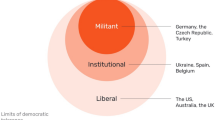Abstract
The theme of legitimate kingship has informed much recent criticism on Havelok the Dane. Most discussion has centred primarily upon Havelok himself rather than the tyrants Godrich and Godard. This paper, therefore, offers a reading of the overthrow of the two usurpers in the light of medieval English political theory and legal practice, focusing on the means by which each is stripped of power and executed. Godard loses Denmark by a legal process reminiscent of early English jury trials while Godrich is overthrown in a battle whose details suggest the rules for judicial combat as spelled out by Henry of Bracton. The means of execution of the two tyrants is also revealing: just as Godard is stripped of the kingdom by legal process, so is he stripped of his own skin, and just as Godrich loses England in the fires of battle, so is his own body burned. The details of the first execution correspond to Bracton’s proposed penalties for lese majesty while those of the second relate to the function of fire itself as a sign of Havelok’s legitimacy.
Similar content being viewed by others
References
Austin, J. L. (1955). How to do things with words. Cambridge, Mass: Harvard University Press.
Barnes, G. (1993). Counsel and strategy in Middle English romance. Bury St. Edmunds: D. S. Brewer.
Beckerman, J. S. (1981). Adding insult to iniuria: Affronts to honor and the origins of trespass. In M. S. Arnold, et al. (Eds.), On the laws and customs of England: Essays in honor of Samuel E. Thorne (pp. 159–181). Chapel Hill: University of North Carolina Press.
Bellamy, J. G. (1970). The law of treason in England in the later middle ages. Cambridge: Cambridge University Press.
Bracton, H. (1968). De legitibus et consuetundibus Angliæ. vol. 2. Edited by George E. Woodbine, (trans: Samuel E. Thorne). Cambridge, Mass: Harvard University Press.
Crane, S. (1989). Insular romance: Politics, truth, and culture in Anglo-Norman and Middle English literature. Berkeley and Los Angeles: University of California Press.
Crawford, D. (2002). The vulnerable body of Havelok the Dane. Medieval Forum 1. http://www.sfsu.edu/~medieval/Volume%201/Crawford.html. Accessed 15 January 2004.
Delaney, S., & Ishkanian, V. (1974). Theocratic and contractual kingship in Havelok the Dane. Zeitschrift fur Anglistik und Amerikanistik, 22, 290–302.
Donahue, C., Jr. (1999). Biology and origins of the English jury. Law and History Review, 17.3, 591–596.
Gross, C. (1902). Modes of trial in the mediæval boroughs of England. Harvard Law Review, 15.9, 691–706.
Herzman, R. B., Drake, G., & Salisbury, E. (1999). Havelok the Dane: Introduction. In R. B. Herzman, G.␣Drake, & E. Salisbury (Eds.), Four romances of England. Kalamazoo, Mich: Medieval Institute Publications.
Hyams, P. R. (1981). Trial by ordeal: The key to proof in the early common law” In M. S. Arnold, et al. (Eds.), On the laws and customs of England: Essays in honor of Samuel E. Thorne (pp. 90–126). Chapel Hill: University of North Carolina Press.
Klaeber, F. (Ed.). (1950). Beowulf and the fight at Finnsburg (3rd ed.). Lexington, Mass: D.C. Heath and Co.
Melinkoff, R. (1973). Riding backwards: Theme of humiliation and symbol of evil. Viator, 4, 153–176.
Metnick, J. M. (1988). From neighbor-witness to judge of proofs: The transformation of the English civil juror. American Journal of Legal History, 32.3, 201–235.
Pollock, S. F., & Maitland, F. W. (1968). The history of English law before the time of Edward I. vol. 2. Cambridge: Cambridge University Press. (reprint, Cambridge University Press., 1895).
Purdon, L. O. (1990). “Ne yaf he nouth a stra” in Havelok. Philological Quarterly, 69, 377–383.
Purdon, L. O. (1993). The rite of vassalage in Havelok the Dane. Medievalia et Humanistica, 20, 25–39.
Reinhard, J. R. (1941). Burning at the stake in medieval law and literature. Speculum, 16.2, 186–209.
Salisbury, J. (1979). Policraticus: The statesman’s book. Edited and Translated by M. F. Markland. New York: Frederick Ungar Publishing Co.
Saresberiensis, I., & Carnotensis, E. (1909). Policratici: sive de nvgis cvrialivm et vestigiis philosophorvm, libri viii. In C. C. I. Webb (Ed.). Oxford: Clarendon.
Scott, A. (1992). Language as convention, language as sociolect in Havelok the Dane. Studies in Philology, 89.2, 137–160.
Shepherd, S. H. A. (1995). Havelok. In S. H. A. Shepherd (Ed.), Middle English romances: Authoritative texts, sources and backgrounds, criticism (pp. 3–74). New York: W. W. Norton.
Staines, D. (1976). Havelok the Dane: A thirteenth-century handbook for princes. Speculum, 51.4, 602–623.
Swanton, M. J. (1976). “Dane-Skins”: Excoriation in early England. Folklore, 87.1, 21–28.
Author information
Authors and Affiliations
Corresponding author
Rights and permissions
About this article
Cite this article
Wilkie, R.I. Re-Capitating the Body Politic: The Overthrow of Tyrants in Havelok the Dane . Neophilologus 94, 139–150 (2010). https://doi.org/10.1007/s11061-009-9161-0
Received:
Accepted:
Published:
Issue Date:
DOI: https://doi.org/10.1007/s11061-009-9161-0




